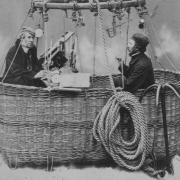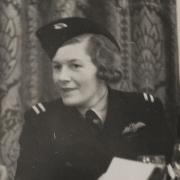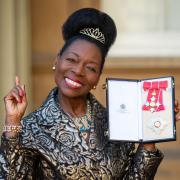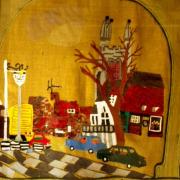Few would remember now that two best-selling, nostalgic books, published between the two world wars, starred as locations Brenchley and Matfield (two villages, but then one Parish), five miles to the east of Tunbridge Wells.
The first book, published in 1928 and winning both the Hawthornden and James Tait Black Memorial prizes, was Memoirs of a Fox-Hunting Man. An evocation of the Edwardian period in rural Kent, its gentle humour and description of villages nestling among the extensive hop gardens and oast houses that were then prevalent in the area,delighted readers.
The second book, published in 1938, was The Old Century, which covered life in the same area in the closing years of the Victorian age. Both titles were semi -autobiographical and their author none other than Siegfried Sassoon, best known as one of the so-called First World War Poets. Others of that genre include Rupert Brook and Wilfred Owen, and together they recounted their experiences in the trenches, highlighting the dreadful conditions and hopelessness of an attritional war.

Sassoon is arguably Matfield's most famous son, born here in 1886 at Weirleigh on Gedges Hill, on the road to Paddock Wood. He was part of the wealthy Bagdahdi Jewish Sassoon family, the so-called “Rothschilds of the East”, who had derived their wealth in areas such as India and China from, among other things, the opium trade. His mother, Theresa, was part of the artistic Anglo-Catholic Thornycroft family - sculptors responsible for some of London’s most well-known statues, including Oliver Cromwell (outside the House of Commons, Westminster) and General Gordon (on Victoria embankment), both by Theresa's brother, Hamo Thornycroft.
A life-long cricket enthusiast, Sassoon must have been pleased to think that he was born in the same village as Frank Marchant, the man who captained Kent's cricket team between1890-1897. Sassoon himself seems to have played for both Matfield and Brenchley, with matches then taking place behind Matfield House on a pitch of doubtful quality. In his autobiography The Old Century, Sassoon mentions that after a particularly low-scoring match, many of Matfield’s best batsmen moved to Brenchley Cricket Club, where conditions were more congenial. An Annual Flower Show Match was played at Brenchley and is described in great detail by Sassoon in Memoirs of a Fox Hunting Man. Away from the village, after pre school at The New Beacon in Sevenoaks, Siegfried headed for Marlborough College in Wiltshire. It would seem fitting, given his love of the game, that Sassoon’s first published poem, The Extra Inch (a parody of the Charles Kingsley poem The Sands of Dee), appeared in a 1903 edition of the magazine Cricket, written when he was a sixteen-year-old schoolboy at Marlborough. From 1905-07 he studied History at Clare College, Cambridge, but left before graduating. He then returned home and lived the life of a country gentleman, playing more cricket and pursuing his other passion, fox hunting, while also issuing small volumes of poetry, although it must be said without much critical acclaim.

Then came the First World War and a commission in the Army. Siegfried showed great courage, earning himself the soubriquet 'Mad Jack' for what has been described as his near-manic daring, and he was decorated twice, including with the Military Cross. Tragically, his younger brother Hamo was killed in Gallipoli in 1915, and when he himself was wounded in April 1917, he returned home to receive treatment. It was while recovering that he met Bertrand Russell and other pacifists, whose views reinforced his own as to the hopelessness of the war. In July of that same year, he wrote his open letter 'A Soldier's Declaration' to The Times newspaper, expressing his belief that fighting was being deliberately prolonged by, "those who have the power to end it". It was only the intervention of his friend the poet Robert Graves that stopped him being court martialled for what he himself described in the published letter as his 'act of wilful defiance of military authority'. Graves convinced the authorities that Sassoon was suffering from shell shock and Sassoon was sent to Craiglockhart War Hospital in Edinburgh for treatment. Here he met, and greatly influenced, the poet Wilfred Owen. Both of them returned to the Front, where Owen was killed in 1918 and Sassoon was again wounded and invalided back home. He wrote 64 war poems, some critical of the generals and politicians - so often described in that era and beyond as "donkeys" leading "lions". Many of his poems were published in The Old Huntsman (1917) and “Counter Attack” (1918); he also worked to bring Wilfred Owen's poetry to a wider audience.
After the war Sassoon spent a short time as literary editor of the left-wing newspaper The Daily Herald, before going to the United States on a nationwide speaking tour. In the late 1920s and 1930s, he turned to writing prose in the form of his best-selling memoirs Further autobiographical volumes Sherston’s Progress (1936) and The Weald of Youth (1942) followed.
Because he was a homosexual (his lovers included the socialite Stephen Tennant, on whom Evelyn Waugh was said to have partly based the character of Sebastian Flyte in his novel Brideshead Revisited), Sassoon's friends were surprised in 1933 when he married Hester Gatty, and at 27 some 19 years his junior - however, letters to her from that year reveal he was very much in love with her. Much to his delight, they went on to have a son, George; a cricket-practising partner! The family settled down in Wiltshire, were Sassoon had acquired a huge mansion, Heytesbury House in the village of the same name. He was able to purchase the house thanks to a large legacy he received from his aunt, Rachel Beer - another extraordinary Kent character and the first woman editor of a British National newspaper, The Observer. Siegfried Sassoon's marriage broke down in 1945 and in 1957 he was received into the Roman Catholic Church. He died on September 1967, and is buried at Mells in Somerset.

What of Siegfried Sassoon's legacy in Matfield today? Matfield Cricket Club moved to the Memorial Hall pitch after the First World War, joining forces for a time with Brenchley, before, in 1960, moving to Matfield Green. And it is here in 2004 that the Sassoon Fellowship revived the Flower Show Match, assisted by the late Dennis Silk and the late Kent and England bowler Dennis Underwood, both former Presidents of the MCC. Matfield Cricket Club is the proud possessor of a scorecard that includes Sassoon's name.

Ten years before Sassoon was born, a pub called The Standing Cross was built just down the road from where he lived. Today, in honour of Sassoon, it is renamed The Poet, and displays on its walls some of Sassoon’s most memorable war poetry. Fittingly, given that Sassoon enjoyed a reputation as a bon viveur, it has a great reputation for food and wine. Up Petteridge Lane, nestling away in an idyllic location opposite weather boarded Wealden cottages, is the Hopbine Inn - another good hostelry and with rooms, too - making it a useful stopping-off point for anyone on the trail of Siegfried Sassoon's life and times.
And what of Weirleigh itself? It is in good hands. After years of neglect it was purchased by a Mr and Mrs Clarke who have restored it to its former glory, and have displayed on its walls much Sassoon memorabilia. It is good to know that Siegfried Sassoon is remembered in so many ways in the village where he was born and spent his formative years.

Malcolm's latest book Tales of Forgotten Kent is a collection of 22 essays about the people and events that remain an integral part of the county's rich tapestry, featuring the eccentric, unusual and often overlooked tales buried within the garden of England. Priced at £17.99 by The History Press it's available online (thehistorypress.co.uk) and from all good bookshops.



























